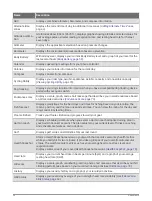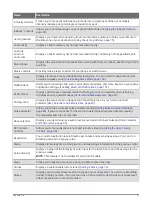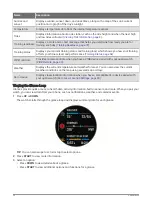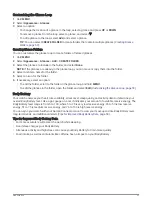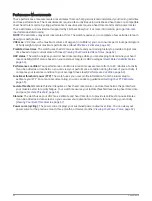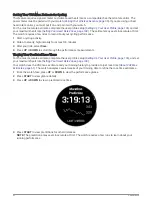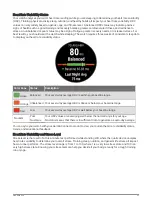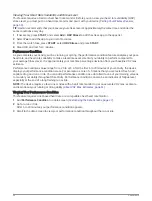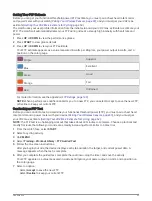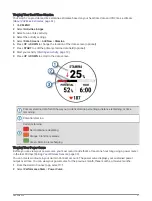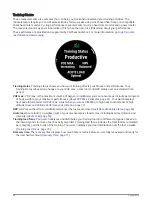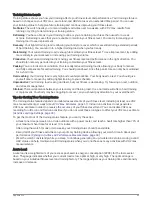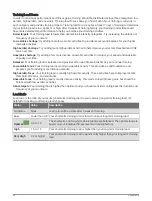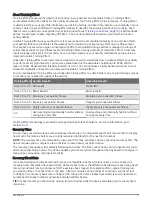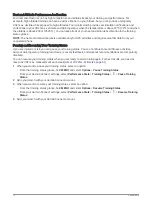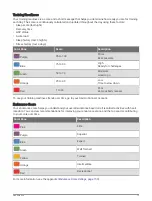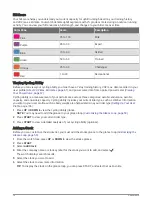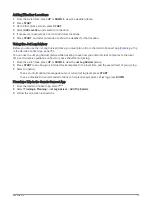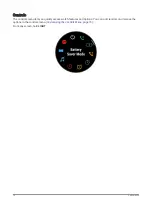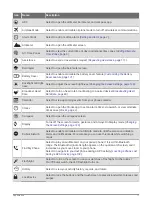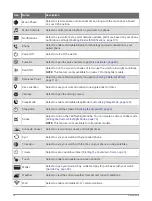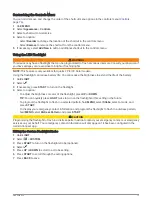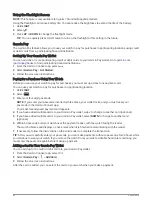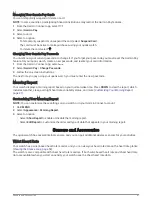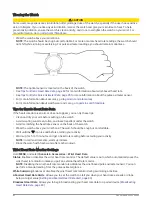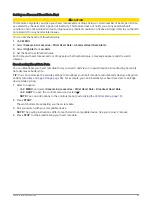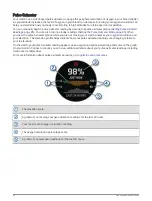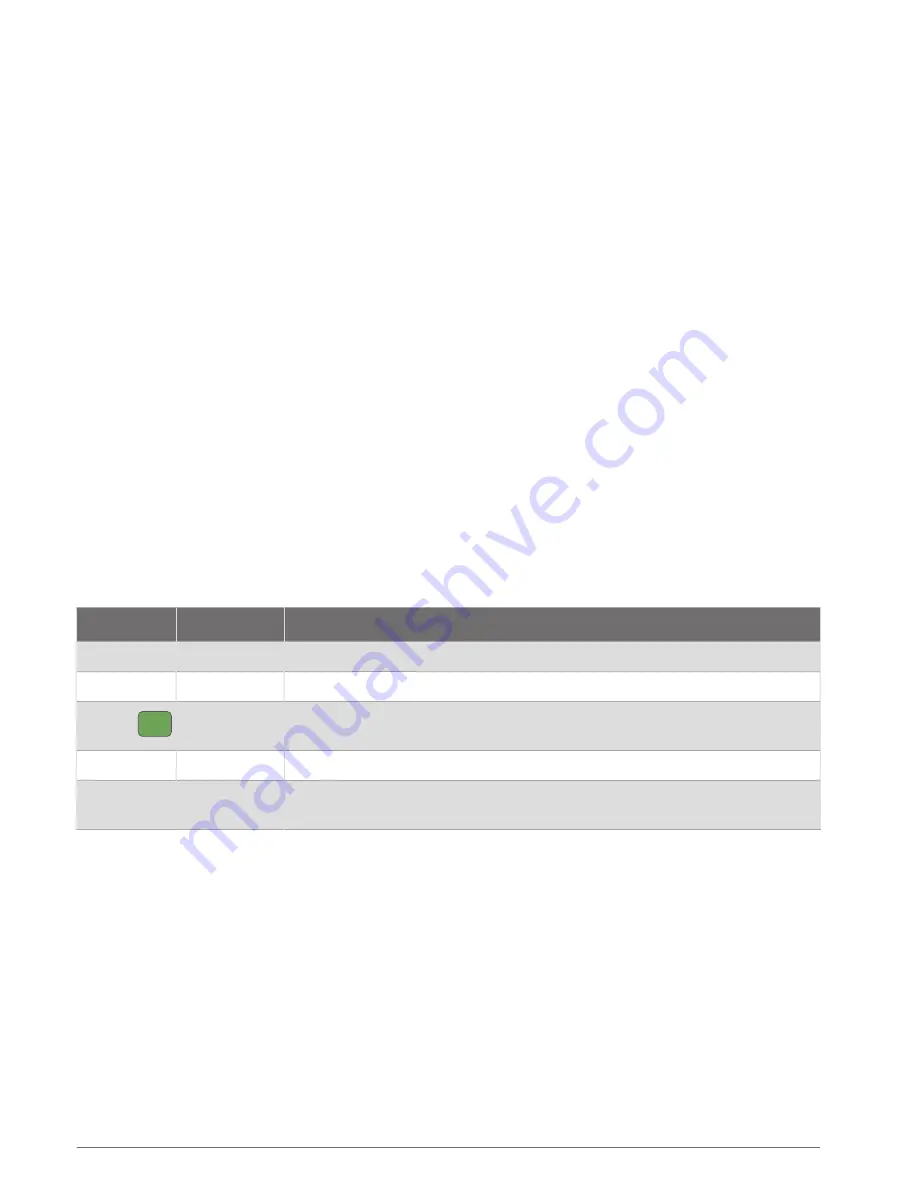
Training Load Focus
In order to maximize performance and fitness gains, training should be distributed across three categories: low
aerobic, high aerobic, and anaerobic. Training load focus shows you how much of your training is currently in
each category and provides training targets. Training load focus requires at least 7 days of training to determine
if your training load is low, optimal, or high. After 4 weeks of training history, your training load estimate will
have more detailed target information to help you balance your training activities.
Below targets: Your training load is lower than optimal in all intensity categories. Try increasing the duration or
frequency of your workouts.
Low aerobic shortage: Try adding more low aerobic activities to provide recovery and balance for your higher
intensity activities.
High aerobic shortage: Try adding more high aerobic activities to help improve your lactate threshold and VO2
max. over time.
Anaerobic shortage: Try adding a few more intense, anaerobic activities to improve your speed and anaerobic
capacity over time.
Balanced: Your training load is balanced and provides all-around fitness benefits as you continue training.
Low aerobic focus: Your training load is mostly low aerobic activity. This provides a solid foundation and
prepares you for adding more intense workouts.
High aerobic focus: Your training load is mostly high aerobic activity. These activities help to improve lactate
threshold, VO2 max., and endurance.
Anaerobic focus: Your training load is mostly intense activity. This leads to rapid fitness gains, but should be
balanced with low aerobic activities.
Above targets: Your training load is higher than optimal, and you should consider scaling back the duration and
frequency of your workouts.
Load Ratio
Load ratio is the ratio of your acute (short-term) training load to your chronic (long-term) training load. It's
helpful for tracking your training load changes.
Status
Value
Description
No Status
None
Load ratio will be visible after 2 weeks of training.
Low
Lower than 0.8 Your short-term training load is lower than your long-term training load.
Optimal
0.8 to 1.4
The short-term and long-term training loads are balanced. The optimal range is
based on your individual fitness level and training history.
High
1.5 to 1.9
Your short-term training load is higher than your long-term training load.
Very High
2.0 or higher
Your short-term training load is significantly higher than your long-term training
load.
70
Appearance

